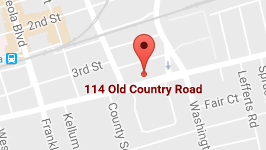Hit and run cases in New York state are undeniably complicated. Many people get involved in accidents in Long Island and flee because of panicking and not knowing what to do. Unfortunately, whether you were at fault or not, you can be charged.
Serious ramifications await drivers that happened to leave without attempting to help or leave behind their details. The seriousness of the offense is case-specific, and you can negotiate for an acquittal or reduced charges through your aggressive criminal defense attorneys in Long Island.
How Can I Ascertain that I Have Been Charged for the Right Offense?
Hit and run is generally a very serious offense. But the severity of the offense determines how it’s handled and the punitive actions that can be taken against you. Remember, you might not be charged as a criminal offender for only leaving after a property is damaged. It is actually a traffic infraction that doesn’t come with a criminal record.
Failure to provide personal and insurance details can come as a class B misdemeanor when an injury is involved. The charge might be elevated to become a Class A misdemeanor if you are a repeat offender of the Class B misdemeanor or if you failed to stop and remain at the scene where people had been injured.
A hit and run might graduate to a felony if you fail to do the needful in an incident where serious injuries were sustained or where some people died. It might be a Class E felony for the former and a Class D felony for the latter.
What Happens When I Don’t Defend Myself Adequately in a Hit and Run?
Your freedom or lack of it when you have been charged with a hit and run offense largely depends on your ability to defend yourself. And this depends on the quality of legal advice you get from your Long Island hit and run defense attorney.
A good defense is usually fused with deep knowledge of the New York laws and can differentiate who gets a guilty or a not guilty verdict. If you fail in your defense and are convicted for a hit and run offense, you risk:
- Ticket of up to $250 if there were no injuries
- Up to 15 days in jail if there are no injuries
- 3 points on your driving record
- A dramatical rise in your vehicle insurance rates
- Court costs and other fees
- Cancellation by your insurance
- Trouble getting your insurance rates lower for several years
- Loss of Commercial Driving License (CDL) for a year
- Up to $5,000 in fines if another person is injured
- Up to 3 months in jail for refusing to provide insurance details
- Up to 1 year in jail for leaving before police arrive at the scene
Does What I Say Have an Implication on My Case After A Hit And Run Incident?
After a hit and run incident, you might be tempted to pull out the apologetic or remorse card. But voicing this or any other thing can implicate you of the offense. Most people blurt out about how they didn’t mean to, implying that they are guilty.
The rule of the thumb after a hit and run is never to admit fault in whichever circumstance. For instance, if it is established that you did not realize that you had struck another car when you left, you might not be convicted for the offense.
Note that, even if you just tap another vehicle’s bumper without causing any damage, the law requires you to stop. So, if you defend yourself with the excuse that you realized that no damage had been caused and intentionally left the scene, you can be convicted.
What Steps Can I Take Towards Getting Better Outcomes for My Case?
While your Long Island hit and run defense attorney works towards building the best possible defense for your case, you may wonder if you can do anything to contribute to better possibilities. The online defensive driving course can have a positive impact on your case.
Taking the course can lower the chances of your insurance canceling your coverage with them and the possibility of your insurance rates rising. It can also keep the three points that come with a hit and run offense from being added to your driving record.
Other activities that you can do while you wait for your case to be determined will depend on the unique requirements of your case. For instance, if substance abuse was involved, you could consider taking online courses in line with the problem.
How Can I Defend Myself Against a Hit and Run Offense in Long Island?
Mistake of facts is a common defense that can be used depending on the situation. It simply means that you were not aware that you had actually hit another person, their vehicle, or their property.
You might also defend yourself if the other driver told you to leave and not worry about it. In such a case, both parties in the incident were unaware of injuries resulting from the accident. Thus, you cannot be convicted if you left under such circumstances.
Other defenses that can be explored by your hit and run defense lawyer in Long Island include:
- Improper custodial interrogation
- Violation of your constitutional rights
- Arrest beyond a year after the incident
- You were unable to provide reasonable assistance
- You did not know about any injuries
- You did not know there was damage to the property
- Failure to provide your information wasn’t willful
- The failure to stop wasn’t willful
- You were not driving the alleged vehicle
- Involuntary intoxication
- You were responding to an emergency
Qualified Legal Counsel Guiding and Representing You Throughout the Process
A hit and run offense in Long Island can leave you with regrettable consequences. You don’t want to risk going through the defense process without a quality defense team. A seasoned criminal defense lawyer in New York can help you explore various defense mechanisms.
The criminal defense lawyers at the Mirsky Law Firm are ready to fight for your freedom. Despite the complexities of the laws regarding the hit and run offenses in New York, we have the experience and skills to counter the prosecution. Schedule a FREE consultation with us today!














Comments are closed.